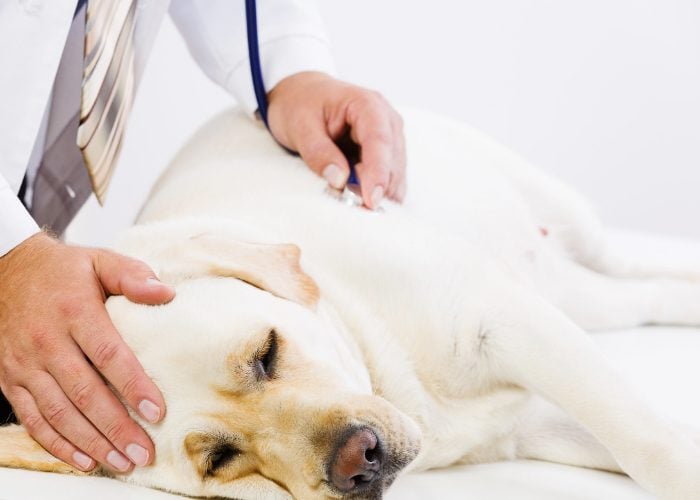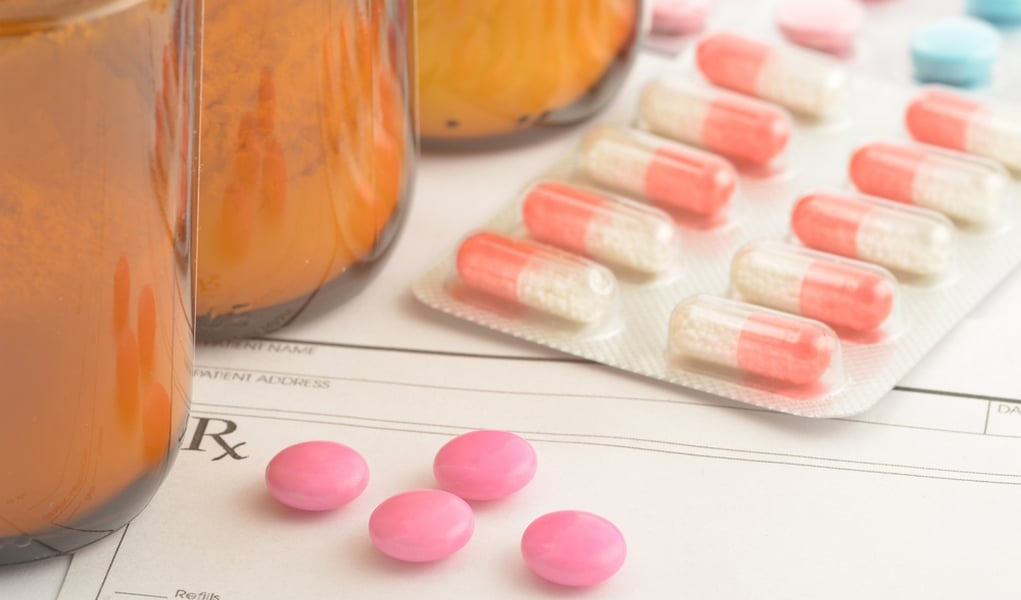Most pet owners don't realize that their homes are filled with items that could potentially harm their pets. You make sure that your home is safe when there are small children present. Why wouldn't you do the same for pets? Securing these common household hazards is a big part of pet-proofing your home.
We want to keep our pets safe at all costs, but their natural curiosity often gets them into trouble. Animals explore the world with their noses and mouths. When they have access to dangerous items, we often don't realize it until our pets become ill.
Some of the most common symptoms to keep watch for include:
- lethargy
- fever
- vomiting
- diarrhea
- blood in vomit or stool
- excessive panting
- loss of appetite
While these symptoms may be linked to other issues, they can often be a sign that your dog has gotten something that he shouldn't have. If the symptoms come on quickly, if multiple symptoms occur at the same time or if the symptoms get progressively worse over a short period of time, you need to seek veterinary care immediately.
7 Common Household Hazards That Can Harm Your Pet
1. Cleaning products
Most of us understand the dangers of ingesting cleaning products. These products are made with lots of poisonous chemicals that could kill pets or humans. You must be sure that all cleaning products around your home are safely secured in cupboards or closets.
We must also be cautious of the cleaning products that we use around our homes – especially on the floors. Your pets walk on the floors in your home and then lick their paws. They may eat things off the floor.
Does your dog drink out of the toilet? Residue from bleach or other chemical-filled cleaners may be in the water. For these reasons, it's important that you choose natural cleaning products that are safe for pets.
2. Rodenticides and insecticides
Unfortunately, most pet owners think that harmful chemicals are necessary to rid their homes of pests and parasites. The Environmental Protection Agency says that 75% of households in the U.S. use chemical pesticides in their home.
When you use products made with toxic ingredients, the toxins get into the air and on virtually every surface in your home. Even if your pet doesn't get into the direct source, there is a very good chance they will still be exposed to the chemical ingredients.
If you have a dog or cat that likes to hunt, they may even ingest the rodents/insects after the pests have ingested the poison. If your cat, for example, were to eat a mouse that was infected with poison, your cat would ingest the poison as well.
It's best to stay away from pest poisons if you have pets. The use of traps or all-natural devices, such as ultrasonic pest control units, is much safer for all of the pets and humans in your home.
3. Medications
There are plenty of unsafe human medications that owners often consider giving their pets. These can be toxic due to physical and chemical differences between pets and humans. A dog's body, for example, cannot break down certain chemicals found in human medicine, like acetaminophen. As a result, the chemicals attach to the dog's liver and slowly destroy it.
Not only is it unsafe to give your dog ANY human medications without consulting your veterinarian, it's also important to keep all over-the-counter and prescription medications locked away your pets cannot reach them. If your dog did get into a medicine container, he could overdose on the medication in a matter of minutes.
4. Plants
Pet owners must be very careful when bringing plants into their homes or planting them around the yard. Many common household plants can be toxic to pets. Some of the most common include aloe vera, ivy, sago palms, lilies and azaleas. For an extensive list in alphabetical order, check out our resource The Ultimate List of Toxic and Safe Plants and Seeds.
5. Laundry products
This is an area of the home that is often overlooked. Laundry detergent, bleach, dryer sheets, fabric softener, stain removers…the list of laundry room dangers goes on and on. It's best to keep your pets out of this room completely, if possible. Make sure that all of your laundry supplies is kept in a closet or cupboard that your pets cannot access.
6. Batteries
Another often overlooked product on my list of common household hazards for pets. If ingested, batteries could cause severe health problems or even lead to death. According to VetsNow.com, “experts at the Veterinary Poisons Information Service carried out a study into battery ingestion in dogs. In a review of 271 cases, 53% showed no symptoms, 27% were sick, and 17% suffered mouth ulcers or inflammation.”
They go on to say that “of the cases involving ingestion, 10% involved button batteries, 32% AA batteries and 19% AAA batteries — with the remaining 39% unknown. There were two fatal cases among the unknowns, with both dogs showing signs of stomach ulcers. Emergency surgery took place in 13 cases while the average time it took for a battery to pass through the body was 51 hours.”
7. Children’s toys
This is one of the common household hazards that I've had experience with myself. Many children's toys are small enough for a dog to swallow hole. Others have small pieces that can easily be pulled or chewed off and swallowed.
Once ingested, these toys can poke holes in the esophagus, stomach or intestines. They could also cause a blockage in the digestive tract that would require surgery to be removed. If you are one of the many families that has dogs and small children, be sure that the toys are picked up anytime your pet is left unsupervised.
It's best to close playroom and bedroom doors when you're not able to keep a close watch on your pet. As the old saying goes, it's better to be safe than sorry.
When it comes to our pets, we cannot be too careful. They explore their world with their noses and mouths, and it's our job to make sure they don't encounter any unnecessary dangers. Follow these tips to ensure that you prevent your pup from getting into any common household hazards for pets.
READ NEXT: 10 Most Dangerous States for Dogs To Live In














